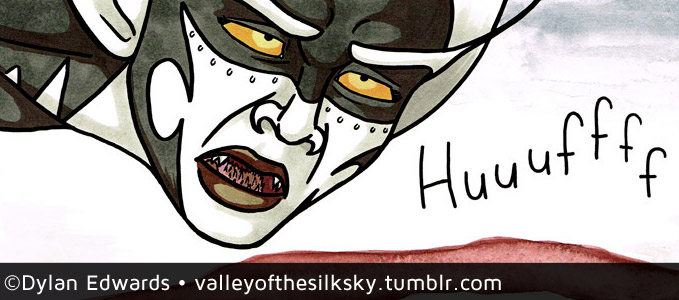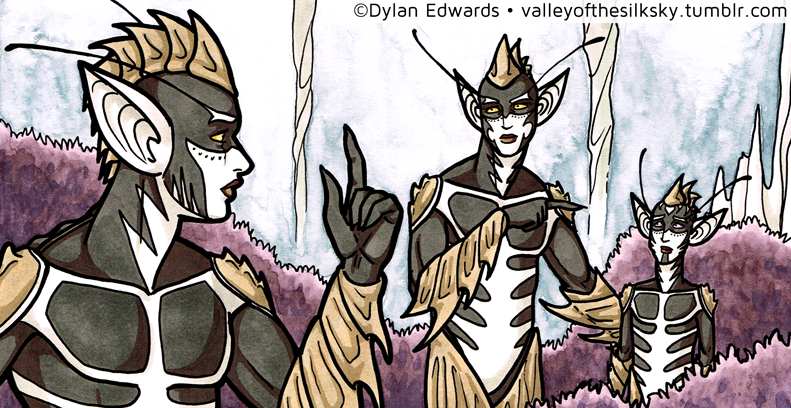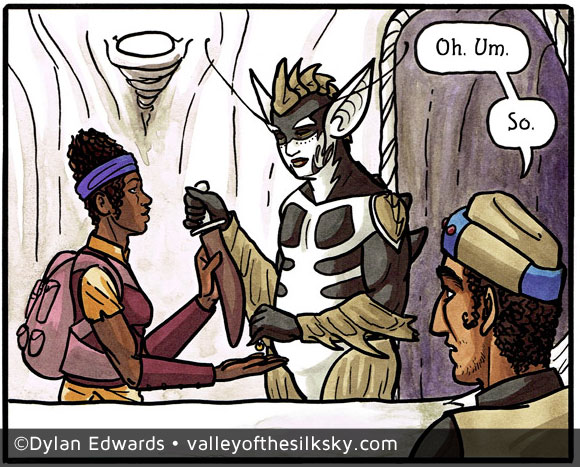 The Daraz are indigenous to the Pocalo Valley, while humans wandered in a few thousand years ago. For the most part, things are pretty chill and symbiotic between the two species.
The Daraz are indigenous to the Pocalo Valley, while humans wandered in a few thousand years ago. For the most part, things are pretty chill and symbiotic between the two species.
Since the Daraz are subterranean and build their cities and farms inside the mountains, there is little competition with humans over living space. There is a certain amount of overlap in the use of wild food resources, particularly animal protein, but on the whole the integration is peaceful. Both parties pretty quickly figured out they could benefit from one another’s presence.
What the Daraz get out of it: FIRE. Being subterranean, they cannot burn anything basically ever. Not only would they all die of asphyxiation, fire messes with their infrared vision something fierce.
But fire is also incredibly useful for all sorts of technological innovations, so by allying with the Humans the Daraz are able to gain the benefits of access to fire without the downsides.
What the Humans get out of it: DEFENSE. The upper provinces of Pocalo (that is, all provinces that don’t touch the ground) have a universal ban on weapons of war, and on physical fighting of any sort.
What if an outside force wants to invade? What if a criminal needs to be captured and detained? What if you are a caravan merchant and don’t want your stuff stolen by bandits? For all of these things, Humans employ the Harcos, the Daraz warrior/hunters. The mere presence of the Daraz in the mountains discourages invading forces (it’s difficult enough as it is to march any kind of army up the side of a mountain, and even moreso when the mountain itself is full of people who don’t want you marching).
Harcos also act as officers of the peace to some extent – they have a huge investment in Pocalo functioning as a stable society, but little investment in or loyalty to individual Humans. As such, their susceptibility to bribery is low. And, because they’re excellent trackers, they’re very useful for hunting down known criminals.
Humans can hire Harcos for things like caravan security, or protection for runners going into particularly dangerous areas. In these cases the Harcos basically function as mercenaries, with the payment submitted to the clan as a whole. The hirer pays with a Harcos chit, a special coin used specifically for this purpose. The coins have to be bought from the Pocali government and they ain’t cheap. If you’re small potatoes, no Harcos bodyguard for you.
So, while the Harcos’ primary function is the protection and betterment of their clan, you will often see them interacting with humans as The Heavy. Jobs that involve interaction with humans are typically rotated; an individual Harcos still spends at least 75% of xer time on clan duties.

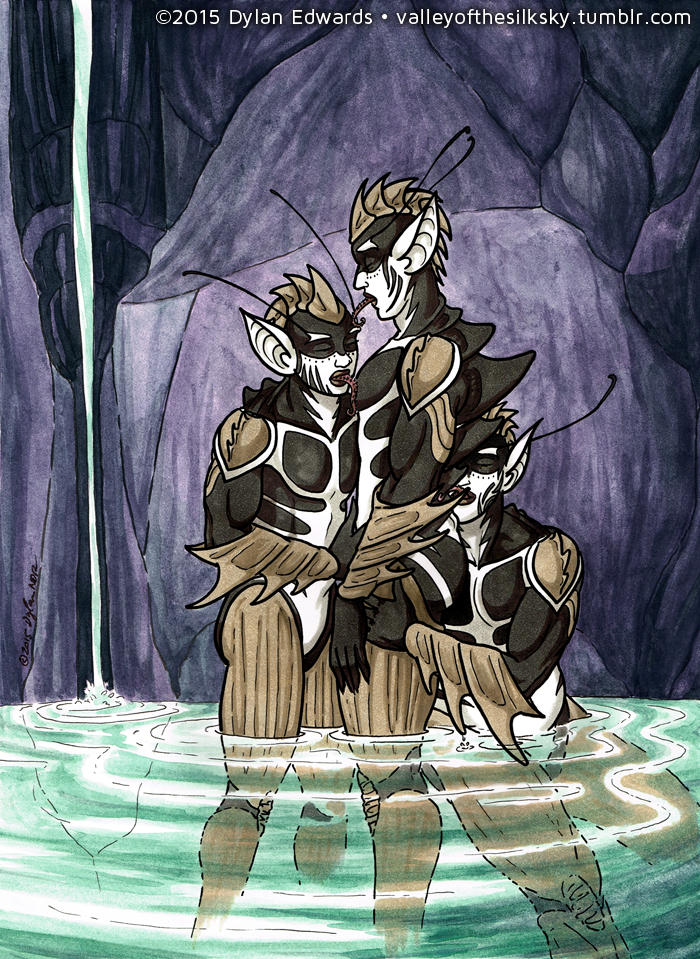
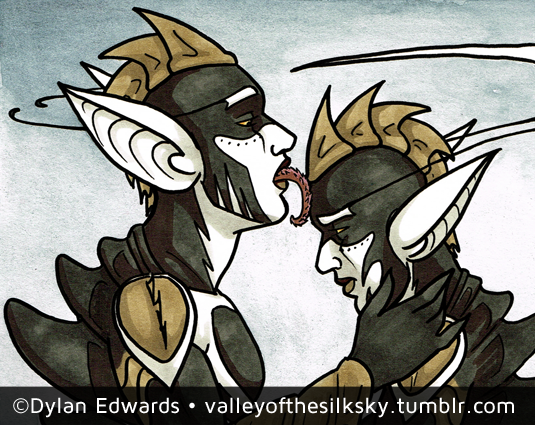
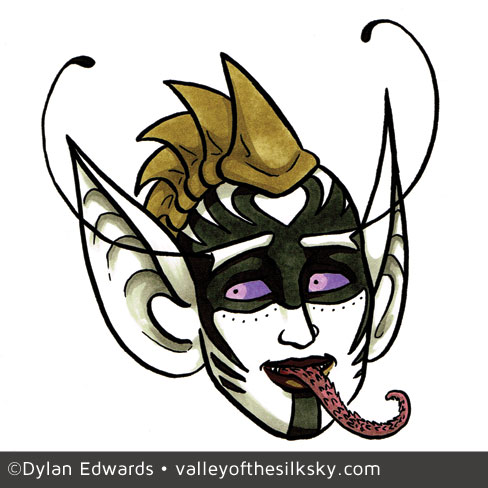
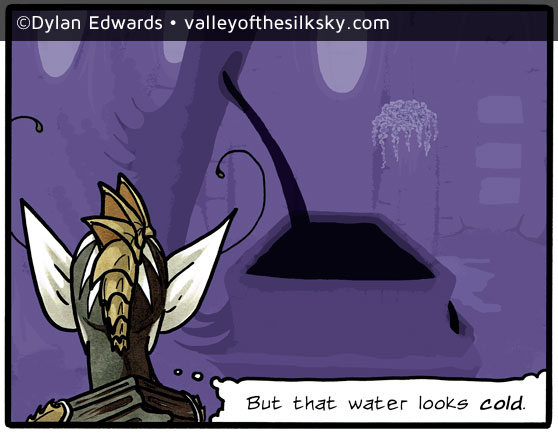 While infrared vision registers heat, infrared is actually a wavelength of light, and it behaves differently from visible light in several notable respects: water and glass both appear opaque in infrared, and extremely smooth surfaces can have a mirror-like reflection, even if they’re made of wood or stone.
While infrared vision registers heat, infrared is actually a wavelength of light, and it behaves differently from visible light in several notable respects: water and glass both appear opaque in infrared, and extremely smooth surfaces can have a mirror-like reflection, even if they’re made of wood or stone.